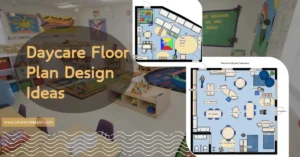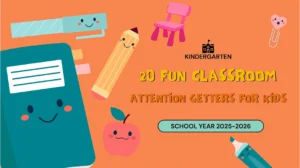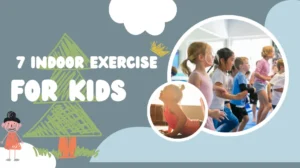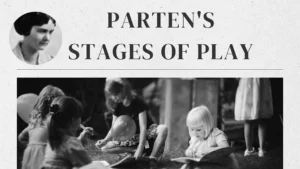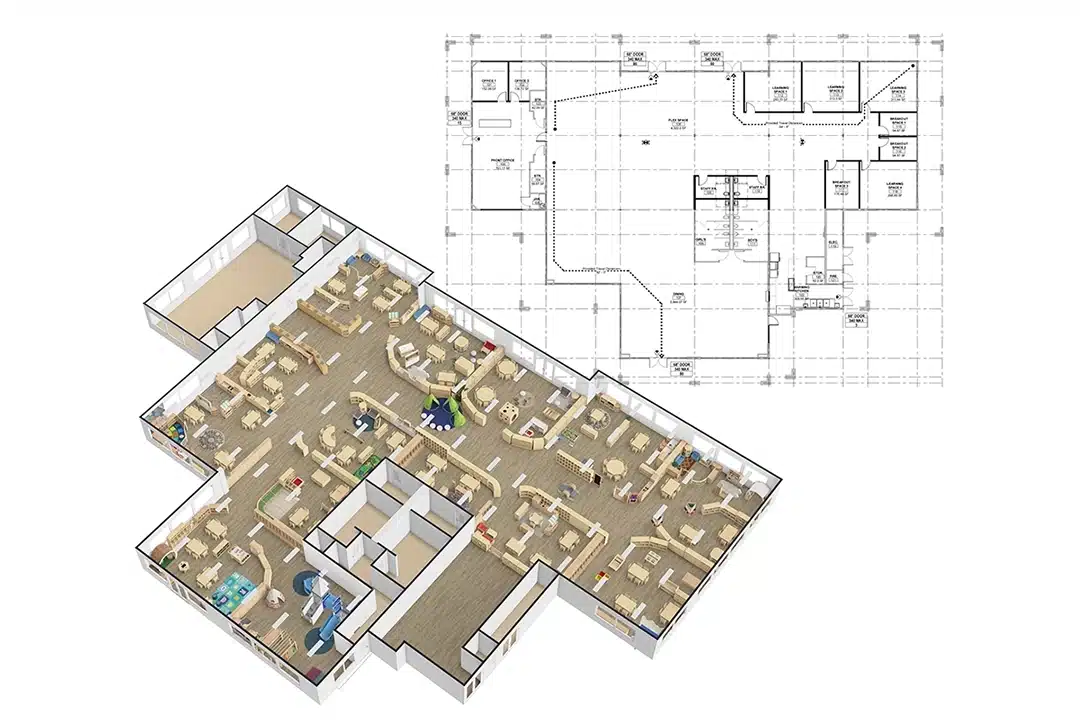Are you constantly searching for Learning Tower Ideas that make your child’s daily routine more meaningful? Do you feel like your toddler wants to “help” but you’re not sure how to involve them safely? Have you seen learning towers online and wondered how exactly they fit into real-life parenting or classroom routines?
Yes, Learning Tower Ideas can transform your child’s everyday moments into hands-on educational opportunities. By incorporating simple, guided activities through the use of a learning tower, toddlers can build independence, develop fine motor skills, improve focus, and gain confidence. These towers provide a safe, elevated space where children can participate in real tasks like cooking, cleaning, or art-making, each daily routine a rich developmental experience. It’s an excellent approach for Montessori or Reggio-inspired learning environments.
This article will guide you through 20 creative and practical Learning Tower Ideas that are not only educational but also genuinely fun for toddlers. Let’s explore how you can bring early learning into every corner of your home or classroom.
What Is the Learning Tower?
Have you ever seen a toddler try to help in the kitchen, standing on a chair that wobbles dangerously under their feet? Or maybe you’ve felt the frustration of wanting to include your child in your daily routines but didn’t have a safe way to do so. That’s where the Learning Tower becomes a game-changer. But what exactly is it, and why is it so popular in Montessori homes and kindergartens?
A Learning Tower is a sturdy, elevated platform explicitly designed to help young children safely reach countertop height. It allows toddlers to take part in real-life tasks—like cooking, brushing their teeth, or washing their hands—without needing to be carried or supervised every second. The structure is enclosed on all sides, preventing falls and offering peace of mind to both parents and teachers.
Unlike a basic stool or chair, the learning tower is built with child safety and development in mind. It usually features adjustable height levels, a broad stable base, and handrails for added support. Most towers are made from durable wood and finished with child-safe, non-toxic coatings. The idea is to create a safe, independent space where children can stand, observe, and most importantly, participate.
This product has its roots in the Montessori philosophy. Dr. Maria Montessori believed that children learn best through active involvement in their environment. The learning tower puts this belief into action when children are allowed to take part in daily life activities—measuring flour, stirring soup, watering plants—they develop real-world skills, independence, and confidence.
Another considerable benefit is skill development. As toddlers interact with tools, textures, and tasks at adult height, they strengthen both gross and fine motor skills. They also engage in language learning, math concepts like measuring or counting, and problem-solving. The tower supports all of this while simply being part of the everyday routine.
Whether used at home or in a preschool setting, the learning tower is one of the most versatile and valuable pieces of early childhood furniture. Parents use it in kitchens and bathrooms, while educators place it in practical life areas, sensory spaces, or classroom kitchens. Wherever it goes, the tower promotes interaction, focus, and self-confidence.

Developmental Benefits of Learning Towers
As toddlers grow, their desire to explore, imitate, and participate in everyday activities becomes stronger. But traditional furniture like stools and chairs often pose safety risks. That’s where a toddler tower, also known as a learning tower, comes into play—offering a safe, supportive space for children to engage in real-life experiences. But beyond safety and convenience, what are the real developmental benefits of learning towers?
Encouraging Independence at an Early Age
One of the biggest advantages of a toddler tower is that it supports a child’s natural drive for independence. Toddlers want to do what adults do—whether it’s cooking, brushing teeth, or washing dishes. A learning tower empowers them to join in safely and on their own terms.
Instead of being lifted or watched from a distance, the child climbs into the tower independently, gaining a sense of autonomy. This helps them build confidence, decision-making skills, and pride in their abilities. The toddler tower becomes a personal space where children can take initiative and feel responsible.

Supporting Motor Skills and Physical Coordination
Fine and gross motor skills are fundamental in early childhood development. A toddler tower offers plenty of opportunities to strengthen both. When toddlers climb in and out of the tower, they work on balance, coordination, and muscle control. Standing upright at a higher level also improves posture and spatial awareness.
Additionally, participating in hands-on tasks—like stirring, pouring, scrubbing, or sorting—enhances their fine motor skills and hand-eye coordination. These everyday motions contribute directly to writing readiness and self-care tasks, such as dressing and eating independently.
Enriching Language and Cognitive Development
A toddler tower isn’t just physical—it’s also deeply cognitive. When a child stands at counter height with an adult, they are exposed to more complex conversations, vocabulary, and sequencing of tasks. Instead of being left out, they become an active participant in the moment.
For example, a parent might say: “First, we wash the apples. Then we slice them.” These verbal cues promote sequencing, memory, and early language development. Children also learn to follow multi-step instructions, identify objects, and ask questions—key building blocks for strong cognitive growth.

Making Daily Routines Educational
Finally, one of the most underrated benefits of a toddler tower is its ability to turn simple routines into learning opportunities. Washing hands becomes a chance to talk about hygiene. Baking cookies becomes a math lesson about measurement. Watering plants becomes an introduction to science and nature.
By raising a child to adult level in a safe and stable environment, the learning tower makes it easy to bring education into everyday life. It’s a simple yet powerful tool for families and early education centers who want to align with Montessori or Reggio principles.
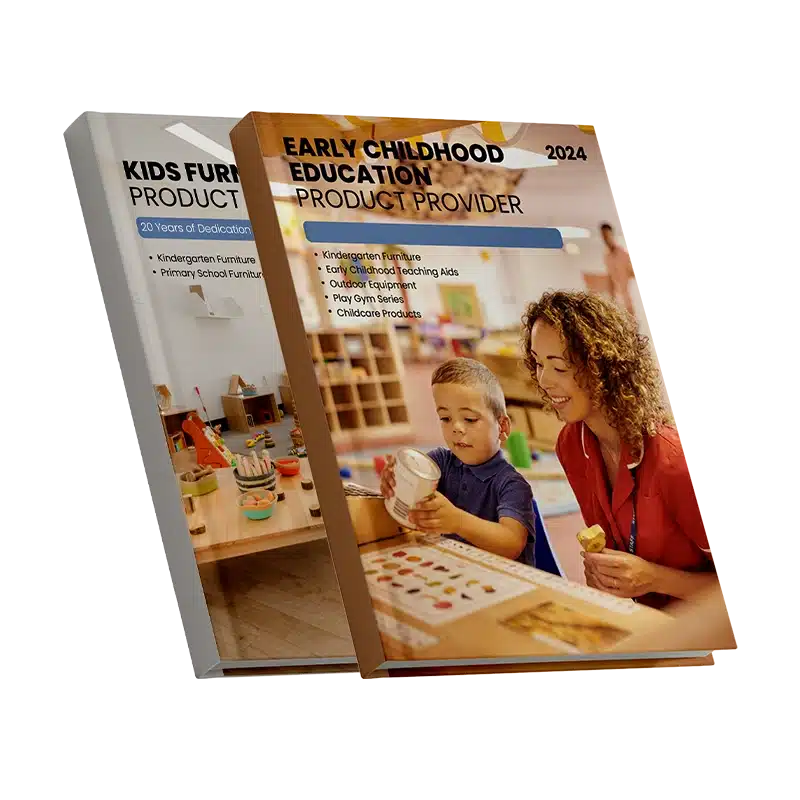
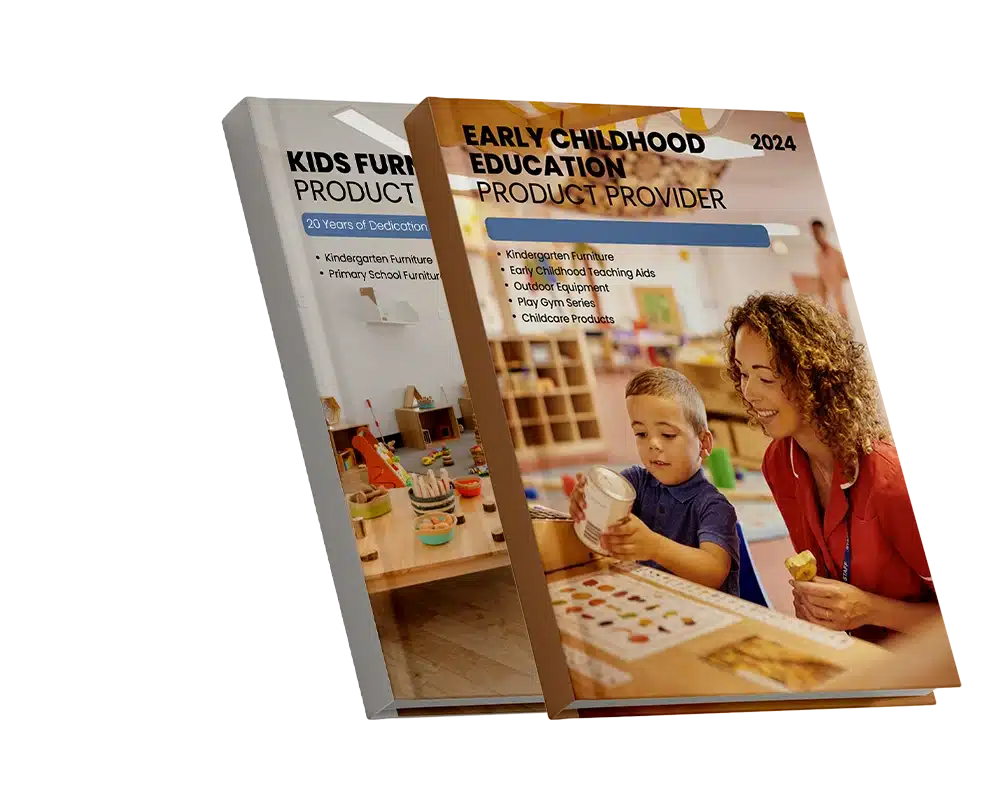
20 Learning Tower Ideas Activities
Creating meaningful and developmentally appropriate activities using a learning tower isn’t just about keeping toddlers busy—it’s about turning everyday tasks into learning opportunities. The following Learning Tower Ideas combine life skills, sensory play, and early childhood education in a safe, interactive way. These activities are perfect for home or classroom environments and are based on Montessori-inspired routines. Below are expanded ideas that showcase how the learning tower can be used effectively.
Potato Scrubbing
Hand a toddler a bowl of potatoes, a small brush, and a basin of water, then invite them to scrub. This simple task becomes a full-body experience when done at the right height, and the learning tower makes it possible. Children not only engage their fine motor skills by brushing but also learn about texture (smooth vs. rough), temperature (cold water vs. room-temperature potatoes), and purpose (preparing food). Encourage language by asking questions like “What does the skin feel like?” or “Can you scrub off the dirt?” This is also a wonderful way to include them in dinner prep while reinforcing cleanliness and task completion.

Making a Smoothie
Smoothie prep is one of the most enjoyable Learning Tower Ideas for toddlers. Start by laying out safe, soft fruits like bananas, berries, and peeled mangoes. Let the child peel, scoop, and drop them into a blender jar (with supervision, of course). Discuss the colors, smells, and tastes as you go. You can add yogurt or milk, then allow the toddler to push the blender button while you hold it securely. This activity supports sequencing (“first we add banana, then yogurt”), math (measuring ingredients), and sensory exploration. It also encourages autonomy, as the child creates something they can drink and enjoy with pride.

Spreading Peanut Butter
Give your toddler a slice of bread and a small, toddler-safe spreading knife. Scoop a bit of peanut butter (or any alternative like cream cheese or mashed avocado) into a bowl. Standing safely in the learning tower, your child can practice the vital life skill of spreading. This action builds bilateral coordination, strengthens the wrist and fingers, and helps them gain control over hand movements. Let them create their snack—no need for it to look perfect. What matters is the effort and the self-confidence they gain through independence.

Shaping Dough
Whether you’re baking bread or just doing a play-based activity with homemade dough, shaping dough is a classic and effective Learning Tower Idea. Provide a child with a ball of dough and some simple tools—rollers, cutters, or even just their hands. Let them squeeze, twist, and mold. You can guide them to make letters, animals, or simple shapes. This is an excellent fine motor workout that also enhances creativity and sensory development. The standing position offered by the toddler tower allows them to use both hands freely while engaging their core and upper body strength.

Washing Their Hands
With the learning tower placed in front of a sink, handwashing becomes a moment of routine mastery rather than a chore. Set out a small pump soap dispenser, a towel within reach, and use a mirror if possible. Demonstrate the steps: turn on the tap, pump the soap, rub thoroughly (singing a song helps!), rinse, and dry. Toddlers quickly learn to perform these actions independently. This builds personal responsibility and hygiene habits. The act of climbing up and down the tower for this task also reinforces the tower’s role as a supportive tool in their daily self-care.

Sensory Oatmeal Play
Fill a shallow container with dry oats and provide cups, spoons, funnels, and small animal toys. Sensory oatmeal play in a toddler tower setup keeps the child engaged for long periods. They explore concepts like volume, texture, and cause and effect (“What happens when I pour from high up?”). Because they’re standing, their arms have a greater range of motion, and they feel more immersed in the activity. You can modify this idea with rice, flour, or cornmeal. For added educational value, hide alphabet letters or number shapes for them to find and identify.

Mixing a Batter
Introduce your toddler to simple baking by letting them help mix batter for muffins, pancakes, or cupcakes. Pre-measure the ingredients and pour each one into the mixing bowl. The child can then stir using a large spoon or whisk. Talk them through the process: “We add flour, then sugar, then eggs.” This activity is ideal for developing motor planning and sequencing, and it gives children the satisfaction of contributing to a meal. The elevated, secure position in the toddler tower allows them to be physically involved without needing to be lifted or held.

Creative Painting Station
One of the most engaging Learning Tower Ideas is turning your kitchen counter into an art station. Set up a washable tray or craft mat at counter height. Provide your toddler with non-toxic paints, brushes, sponges, and even fruit stamps or rollers. As they mix colors or explore brush textures, you can introduce simple concepts like warm vs. cool colors, shapes, or symmetry. It also becomes an opportunity to work on vocabulary—describe what they’re creating, talk about the emotions in the artwork, and use words like “dab,” “stroke,” or “swirl.” Clean-up afterward can even become part of the activity, teaching responsibility and routine.

Wash Socks
Laundry isn’t just for adults. With a basin of soapy water on the counter and a learning tower set up securely in front, toddlers can wash their socks or doll clothes. This water-based task supports sensory learning, builds hand strength through wringing and scrubbing, and introduces practical life concepts like hygiene and responsibility. Ask your child to pair the socks or sort them by size or color before or after washing. Describe each step using simple, clear language: “First we soak it, then we scrub it, then we squeeze out the water.”

Playing in the Water
One of the easiest and most loved Learning Tower Ideas is simply setting up a water play station at the sink or on a waterproof surface. Place cups, funnels, spoons, sieves, and floating toys within reach. Allow the child to pour, scoop, and splash to their heart’s content—within boundaries. Water play promotes hand-eye coordination, introduces early science (volume, flow, temperature), and is calming for many children. It also keeps them close to adult supervision, while still granting autonomy. Add a few drops of food coloring or some natural scents like lemon or mint to make the activity even more engaging and sensory-rich.

Tiny Cleaner, Big Helper
Give your toddler a sponge, a spray bottle with water, and a rag. In their learning tower, they can clean the counter, cupboard doors, or even a chalkboard wall. The motion of wiping supports cross-body coordination and builds motor planning. This activity introduces the concept of care for the environment, echoing core Montessori values. You can teach simple tasks like “wipe from top to bottom” or “squeeze the sponge gently.” It also develops patience, attention to detail, and a sense of pride in helping. Narrate the process as you clean together to build language and connection.

Science Explorer
Place a few simple materials on the counter—baking soda, vinegar, food coloring, and small containers—and you’ve got a toddler science lab. Wearing an apron and standing tall in their learning tower, your child becomes an explorer. Watch the reaction between vinegar and baking soda, observe color mixing, or float and sink tests with everyday objects. These hands-on experiments provide early exposure to cause and effect, observation, and hypothesis building. Ask questions: “What do you think will happen when we mix this?” or “Why did that bubble so much?” It’s one of the most dynamic and curiosity-driven Learning Tower Ideas you can offer.

Doing Simple Puzzles
While puzzles are usually done on the floor, moving them to counter height—where a child can stand securely in a learning tower—adds a fresh perspective and promotes stronger postural engagement. Use wooden shape puzzles, chunky animal cutouts, or even basic jigsaw pieces with knobs. Standing at the bench allows toddlers better visibility and access to each piece, helping them focus more clearly on shapes, edges, and patterns. Puzzle-solving sharpens visual-spatial reasoning, develops concentration, and supports fine motor coordination. Encourage them to describe what they see: “This piece has a corner,” or “Where does the circle go?”

Playdough Fun
Playdough is a classic sensory tool—and it’s even more engaging when toddlers work with it at standing height in their learning tower. Lay out a washable mat or tray, provide soft dough, and introduce rolling pins, cookie cutters, blunt scissors, and natural materials like leaves or sticks for stamping. This kind of activity enhances hand strength, bilateral coordination, and creativity. Children love to squeeze, pinch, roll, and flatten—actions that prepare their fingers for future tasks like writing, cutting, and dressing themselves. You can build on the fun by giving them themes like “make your favorite food” or “build a house,” guiding imagination into structured play.

Sorting Objects into Sizes, Shapes, or Colours
Sorting is one of the best Learning Tower Ideas to introduce early math and cognitive classification skills. Provide bowls of different objects—buttons, blocks, dry pasta, or colored pom-poms. Ask your child to sort by color, shape, or size. You can label containers with pictures or words, encouraging visual literacy and pattern recognition. This simple task builds logical thinking, attention to detail, and organizational skills. It also allows for rich language exposure: “This one is bigger,” “These are round,” or “Can you find all the blue ones?” Placing sorting trays or bowls on the counter ensures easy reach and reduces strain, making the task comfortable and efficient.

Kinder-Style Craft Activities
Recreate a mini preschool experience right at your kitchen counter using your toddler tower. Provide glue sticks, paper scraps, yarn, cotton balls, and colored construction paper. Offer prompts like making a paper sun, gluing a collage, or building a caterpillar out of circles. The focus isn’t on perfection—it’s on the process. These craft activities enhance hand-eye coordination, creativity, and sequencing. They also support language as you describe each material and step: “First we glue, then we press,” or “Let’s choose a color.” Allow your child to lead and make choices, reinforcing independence and emotional satisfaction from finishing their project.

Making Their Own Snack
Letting toddlers prepare a simple snack is one of the most empowering Learning Tower Ideas. Standing safely at counter height, they can create their mini meal with guided steps. Offer a small selection of healthy items: crackers, sliced bananas, cheese cubes, or apple slices. With supervision, they can scoop yogurt into a bowl, spread nut butter on toast, or peel a boiled egg. This activity teaches sequencing (“first the spoon, then the yogurt”), builds independence, and reinforces life skills. Children learn portion control, food handling, and how to clean up after themselves. Bonus benefit: Picky eaters are often more likely to try foods they helped prepare.

Watering Indoor Plants
Caring for plants at counter height becomes a peaceful and purposeful moment when done through a toddler tower. Set up small indoor plants on the bench and offer a child-sized watering can. Invite your toddler to gently pour water into each pot, watching how the soil darkens and absorbs the moisture. You can use the opportunity to talk about plant care, growth cycles, and observation: “This one looks dry. Let’s give it a drink.” This activity nurtures patience, fine motor control, and early science awareness. It also helps toddlers learn about responsibility and the importance of caring for living things.

Cracking and Beating Eggs
Toddlers love anything hands-on and messy—enter egg cracking. Standing in a learning tower, they can crack eggs into a bowl (with help), pick out small shell pieces, and whisk the mixture using a child-safe beater. It’s a simple but sensory-rich task that combines coordination, focus, and muscle control. This is also an excellent opportunity for introducing terms like “yolk,” “whisk,” or “scramble.” Letting toddlers contribute to breakfast prep increases their investment in meals and strengthens the connection between work and reward. Even if it’s just one egg, the pride they feel is enormous.

Pouring Tray
Set up a tray with two minor pitchers or measuring cups and some water. Invite your toddler to pour from one to the other, using both hands or switching sides. Add food coloring or even dry materials like lentils or rice to vary the texture. This pouring activity builds control, bilateral coordination, and patience. It’s one of the foundational Learning Tower Ideas from Montessori training, designed to strengthen practical life skills while reinforcing care and precision. You can increase the challenge by adding cups of different sizes or encouraging them to pour without spilling.



When Can Toddlers Start Using It?
One of the most common questions from parents and early educators is: “When can toddlers start using a learning tower?” The answer depends on a combination of age, motor development, and your child’s readiness. A well-chosen learning tower can become a vital part of a toddler’s daily routine, safely elevating them to counter height so they can actively participate in hands-on activities.
Many families and kindergartens use learning towers to promote independence and real-life skills. But knowing when to introduce one and how to choose the right time makes all the difference.
Ideal Age Range to Start Using a Learning Tower
Most toddlers are ready to begin using a learning tower around 18 months, but some may start as early as 16 months if they are physically confident and stable on their feet. Others may not be ready until closer to 24 months. The key factor isn’t just age—it’s developmental readiness.
Children should be able to:
- Stand independently without wobbling
- Climb stairs or low steps with minimal assistance
- Understand simple one-step directions like “step up” or “hold on”
If your toddler meets these milestones, they’re likely ready to begin using a learning tower with supervision. Start with short sessions and keep the activities simple until they’re fully comfortable.

Early Learning Tower Ideas for Beginners
When toddlers are just starting out, safety and simplicity should come first. Choose low-risk activities that allow them to get used to the elevated position. Here are a few beginner-friendly learning tower ideas for first-time users:
- Washing hands at the sink: Guide them step-by-step using a small pump bottle and soft towel.
- Helping rinse vegetables: Offer soft produce like tomatoes or spinach and a bowl of water.
- Sensory bin play: Set up dry oats, rice, or cotton balls in a container for tactile exploration.
- Spreading soft butter on toast: Use a toddler-safe spreader and let them try on their own.
These activities are short, rewarding, and teach children how to stay balanced while using their tower. They also promote hand-eye coordination, confidence, and routine-building.
How to Tell If They’re Not Ready Yet
It’s important to watch for signs that your child may not be quite ready for a learning tower. These include:
- Frequent loss of balance while standing
- Climbing behaviors that are unsafe or uncontrolled
- Trouble following simple safety instructions
In these cases, wait a few more weeks and try again. In the meantime, give your child opportunities to climb stairs with assistance or stand at lower surfaces like coffee tables to build strength and balance.
Introducing a learning tower at the right time—when your toddler is physically and mentally ready—opens the door to a world of interactive learning. Whether it’s washing dishes, stirring soup, or exploring textures, the best Learning Tower ideas are the ones that connect your child to everyday life. With safety, patience, and creativity, this simple piece of furniture becomes a powerful educational tool.

Types of Learning Towers
As more parents and educators turn to Montessori-style learning at home and in classrooms, one piece of furniture has become essential: the Learning Tower. Designed to elevate toddlers to counter height safely, this tool fosters independence, promotes hands-on learning, and integrates little ones into daily routines like cooking, cleaning, and crafting.
But not all learning towers are created equal. Different families and early education centers have different needs, and thankfully, there are several types of learning towers to choose from. Understanding the available styles will help you select the one that best fits your space, goals, and child’s developmental stage.
Adjustable Learning Tower
This is one of the most popular and versatile options on the market. An adjustable learning tower grows with your child, featuring platforms that can be set at various heights to accommodate their changing size. These towers are ideal for long-term use, supporting children from around 18 months up to 5 years or more. Adjustable models often have removable side panels or step locks for added safety. They’re great for families who want to invest once and use the tower across multiple years or even siblings. Look for models made from durable, non-toxic wood and with easy-to-adjust mechanisms that don’t require tools.


Foldable Learning Tower
If you’re tight on space or living in an apartment, a foldable learning tower is an innovative, compact solution. These models are designed to collapse easily for storage when not in use. Some can even be hung on a wall hook or slid behind the fridge or furniture. Foldable designs typically weigh less but are still built with safety in mind. They are especially convenient for parents who don’t want the tower to be a permanent fixture in the kitchen. Despite their lighter structure, the best foldable towers maintain stability and can support active toddlers during use.


Convertible Learning Tower (2-in-1 or 3-in-1)
Convertible designs add extra value by turning the learning tower into something else—a desk, a chalkboard easel, or even a small chair-table combo. These 2-in-1 or 3-in-1 towers are ideal for multi-use spaces and are especially appealing for minimalist families. For example, in a preschool environment, a learning tower can be used during snack preparation and then converted into a seat for art activities or reading. These models typically feature rotating platforms or flipping panels that change the structure with a few simple steps. They support a range of early learning goals and offer maximum utility.


Fixed-Height Classic Tower
The most basic type of learning tower is the fixed-height model. These towers do not adjust or fold, but they’re often the most budget-friendly and sturdy. They are great for kindergartens or multi-child classrooms where the same age group will use them consistently. Simple doesn’t mean ineffective—fixed towers still offer safety rails, wide steps, and thick bases to prevent tipping. For schools or daycare centers, this style is often preferred because of its durability and low maintenance. It’s also easier to clean and inspect for wear and tear.


Twins Learning Tower
Designed for families with more than one toddler or daycare centers, the twin learning tower has space for two children to stand side-by-side. This encourages cooperation, parallel play, and shared learning experiences. It’s beneficial for twins or siblings close in age. These towers are wider and often heavier, requiring more space in the kitchen or classroom. But they solve the age-old problem of “Who gets to help next?” by making space for both. When appropriately designed, twin towers are just as safe and secure as single models.




FAQs
1. Can my toddler use the Learning Tower without adult supervision?
No, toddlers should never use a learning tower without adult supervision. While learning towers are designed to be stable and secure, they are not a substitute for active monitoring. Always ensure your child is using it on a flat surface, with appropriate footwear (or barefoot), and is within your line of sight during any activity.
2. Is a Learning Tower safe for younger siblings to be around?
Yes, but with precautions. If there are younger siblings crawling or walking nearby, it’s essential to position the learning tower away from sharp corners or hot appliances. Avoid allowing multiple children to climb in and out at once unless the model is designed as a twin tower. It’s also a good idea to teach toddlers how to wait their turn and use the tower respectfully.
3. What surfaces are best for placing a Learning Tower?
The ideal surface for placing a learning tower is a non-slip, flat, and hard surface, such as tile, wood, or laminate flooring. Avoid placing the tower on rugs, uneven floors, or near areas where water could make the floor slippery. Proper placement prevents tipping and maximizes your child’s stability and confidence.
4. How long can a toddler typically use a Learning Tower before outgrowing it?
Most children can comfortably use a learning tower from around 18 months up to 5 years old, depending on their height, coordination, and tower design. Adjustable models offer more longevity. Around age 5, children may prefer stepping stools or chairs, but many still enjoy participating in Learning Tower ideas like cooking and crafts at elevated surfaces.
5. Can I use a Learning Tower in rooms other than the kitchen?
Absolutely. While the kitchen is the most common location, learning towers are equally useful in the bathroom for brushing teeth, in playrooms for craft activities, or in laundry areas for sorting clothes. Bringing Learning Tower ideas into multiple spaces reinforces independent living skills and keeps learning spontaneous.
6. What should I do if my toddler only wants to climb in and out, not use it for activities?
This is a common phase. The novelty of climbing is exciting at first. Redirect their energy by setting up inviting tasks: water play, snack prep, or a short storybook on the counter. Rotate the activities daily to maintain engagement. The goal is to make the tower feel like a “work zone” rather than just a climbing frame, and this takes consistency and structure.
Conclusion
The Learning Tower is more than a piece of furniture—it’s a bridge between toddler curiosity and real-world learning. Whether you’re introducing it at 18 months or using it well into the preschool years, the right tower empowers children to participate in everyday tasks with confidence and safety. From practical skills like handwashing and snack preparation to creative exploration through painting, science, and playdough, there are endless Learning Tower ideas that support early development.
By choosing the correct type of tower—adjustable, foldable, convertible, or twin—and introducing it at the right time, families and educators can turn daily routines into valuable learning moments. With proper supervision, thoughtful placement, and engaging activities, the learning tower becomes an essential tool in fostering independence, motor skills, and joyful connection between children and their environment.



